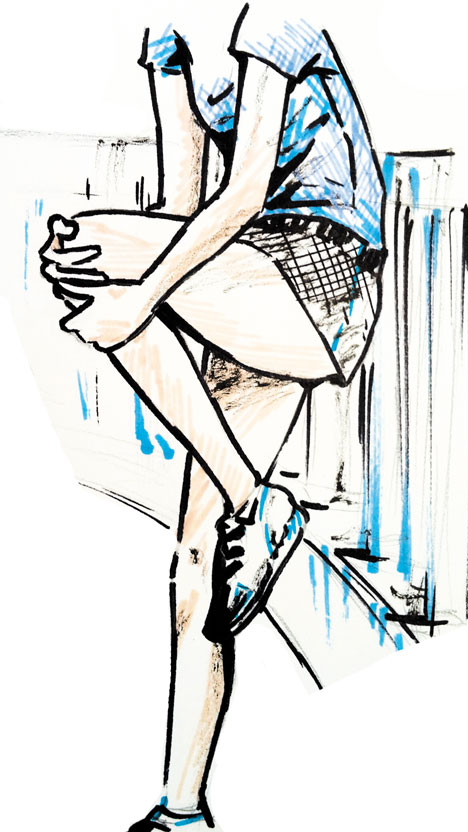
How to prevent the dreaded knee injury
By Emilie Medland-Marchen, October 9 2014 —
So you’ve decided to start going to the gym. You’re ready to get in shape, get stronger and maybe lose some weight while you’re at it. You’ve gotten into a routine and stuck with it.
The only problem is there’s this twinge in your knee that has been bothering you when you bend down to pick up your weights. After a while, it becomes a nagging ache. And eventually, you can’t even bend your right knee without a wave of pain.
Gym plans cut short, you decide to give yourself a break — maybe for a few months. Your knee will heal up on its own, right?
Don’t give up. Knee injuries, whether you’re a casual or professional athlete, are a common ailment.
Amongst female athletes especially, knee injuries involving the anterior cruciate ligament (ACL), which prevents the knee from moving side to side, are dangerous. According to the NCAA, women are two to eight times more likely than men to suffer from knee injuries. Some doctors suggest that’s because of higher estrogen levels, but it’s more likely a mechanical issue.
Women usually have larger hips than men. In the weight room, this results in a mechanical difference between the way men and women lift weights.
Female athletes with larger hips and weaker glutes have a tendency to cave their in knees when they bend. Going “knock-kneed” is a death sentence to your ACL and quickly results in injury.
Since this type of injury is so common, it’s important to be aware of your body when starting a new exercise program. Jumping into something without a slow build up almost always results in injury.
The best way to prevent an injury from stifling your work-out goals is to start slow and build up your resistance. By gradually increasing the distance you run, the amount of weight you lift or the reps you do in the gym, you allow your body time to adjust and to build muscles that allow for stability.
To prevent knee injury in the weight room, it’s important to have a professional spot you while you’re lifting weights. When you start to lift, your technique might need adjustment to get you to the point where you can add weight. You might be lifting in a way that is hurting your body, or has the potential to cause some serious damage.
A weight coach, personal trainer or even a friend with more experience will notice problems with your technique. By catching these problems early, you prevent injuries that could leave you out of commission.
If something is starting to bother you, don’t ignore it. If you’re in a lot of pain while working out, pounding your way through to the end could make things worse.
The best way to check knee pain is through a registered physiotherapist. The Sport Medicine Centre on campus, located next to MacHall, provides a free acute knee injury clinic to patients who have injured their knee in the last six weeks. If needed, massage therapy and chiropractic care is also offered at the Students’ Union Wellness Centre.
When it comes to knee injuries, prevention is the easiest remedy. Dealing with an injury is often discouraging and leaves you where you first started. If you’re starting any kind of exercise program, don’t be afraid to ask for help. Whether it’s a personal trainer or someone with good technique in the gym, there are many people available who want to see you succeed.
When it comes to the gym, everyone is there for the same reason: to get in shape and feel better about themselves. And when it comes to working out, slow and steady definitely wins the race.
